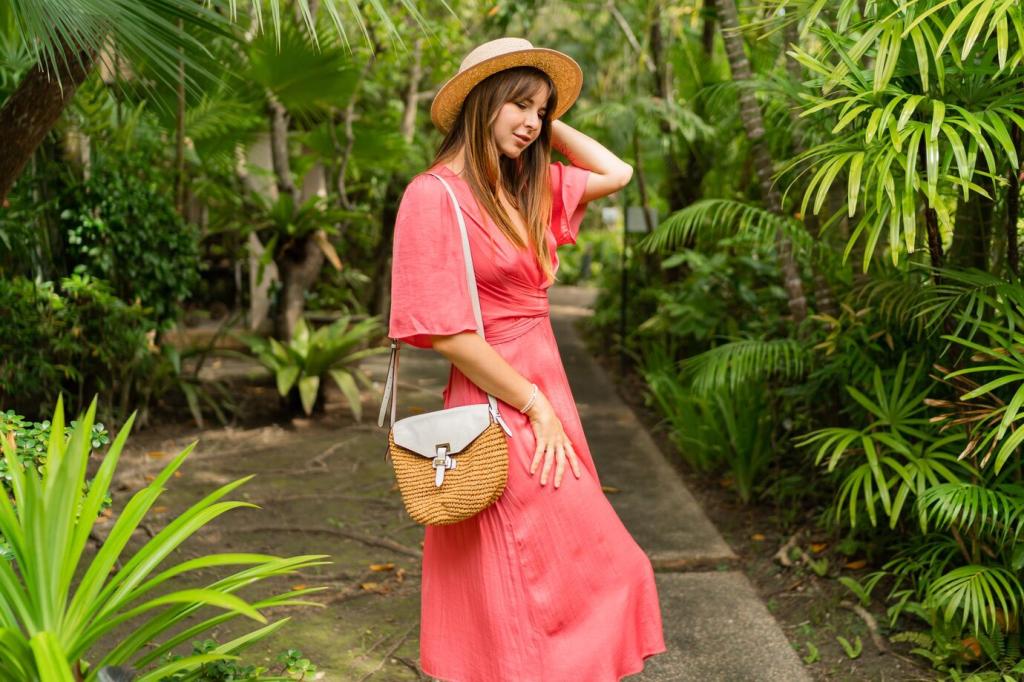
The Rise of Circular Fashion: Trends for 2024
Circular fashion has rapidly emerged as one of the most significant shifts in the modern apparel industry. With growing consumer demand for sustainability, brands and designers are reimagining the lifecycle of garments. In 2024, circular fashion is not just a trend—it’s a transformative movement influencing how clothes are made, used, and reused. From innovative materials to business models that prioritize longevity and waste reduction, circular fashion is carving a new, responsible direction for the industry. Explore the latest developments and transformative ideas shaping circular fashion for 2024 and beyond.
Regenerative Fibers
Regenerative fibers are gaining traction in the fashion industry due to their restorative impact on ecosystems. Unlike conventional materials, these fibers are grown using methods that improve soil health, enhance biodiversity, and sequester carbon. Brands now source fibers like regenerative cotton, hemp, and wool, which regenerate farmland rather than deplete it. This holistic approach aligns with the philosophy of circular fashion, reducing the negative footprint of garment production. Consumers are increasingly driving demand for items certified as regenerative, recognizing not only their durability but their role in healing the planet. The rise of these fibers marks a pivotal development in achieving a closed-loop fashion system.
Bio-Based Textiles
Bio-based textiles are revolutionizing material innovation by harnessing renewable biological resources rather than petroleum or synthetic chemicals. Labels are turning to options like mushroom leather, bamboo viscose, and algae-based fabrics to reduce reliance on finite resources. These materials are often compostable at the end of their lifecycle, making them ideal for circular design. The versatility of bio-based textiles extends to performance and aesthetics, ensuring that style and sustainability go hand in hand. In 2024, more collections will proudly feature these eco-forward textiles, signaling a shift among both designers and consumers toward responsible material choices.
Innovative Business Models
Rental services are transforming how consumers approach fashion, offering instant access to high-quality garments without the commitment of ownership. These platforms allow users to borrow clothes for special occasions or daily wear, reducing the frequency of single-use purchases and garment waste. As awareness of textile waste grows, both niche and major labels are investing in rental services that combine convenience with sustainability. The model is particularly popular among younger, eco-conscious shoppers who seek variety and responsibility in their wardrobes. Expect to see rental platforms expand to include new categories and technologies throughout 2024.
Forward-thinking brands recognize that offering take-back and repair programs fosters brand loyalty while preventing garments from ending up in landfills. In 2024, widespread implementation of in-store and mail-in repair services enables customers to extend the life of beloved pieces. Some companies are even rewarding participants with discounts on future purchases, encouraging sustainable habits. These programs often partner with local artisans and skilled repairers, creating new jobs and skill development opportunities within communities. By integrating take-back and repair mechanisms into their core offerings, brands are paving the way for a more circular, less wasteful fashion ecosystem.
Subscription models are gaining popularity, particularly among those who value regular wardrobe updates without the environmental burden of overconsumption. These services deliver curated clothing selections directly to consumers, often with the option to return, keep, or swap pieces as desired. The result is a sustainable cycle of clothing circulation and reduced textile waste. In addition to convenience, subscribers benefit from exposure to new styles and brands, fostering discovery while minimizing clutter. Brands offering subscriptions typically maintain high-quality standards to ensure garments withstand repeated use. This model is set to scale in 2024 as more people embrace minimalist, flexible, and circular fashion lifestyles.

Previous
Next
Emerging Consumer Practices
Consumers are increasingly scrutinizing their fashion choices, favoring brands that prioritize sustainability and transparency throughout the supply chain. They seek out certifications, detailed information on materials, and stories about ethical production. This heightened awareness is pushing brands to maintain high standards and avoid greenwashing. More people are embracing the philosophy of “buy less, choose well, make it last,” reducing their overall consumption and preferring investment pieces over fast fashion. The trend signals an enduring shift in the marketplace, where quality, ethics, and sustainability factor heavily into purchasing decisions for both new and recycled garments.
